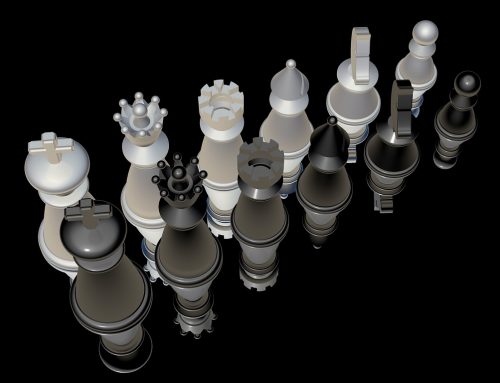Imagine a sack with marbles, whose only difference is colour. If we are in a dark room and put our hand inside the bag, it would be impossible to differentiate the marbles. To the touch, they may all look the same. However, when we turn on the light we will see the extreme differences between them.
We can, however, distinguish by touch if they differ in smoothness, roughness… Even by size or weight. But if we are interested in color, we will have no choice but to see them.
Segmenting our customer database helps us “turn on the light” to be able to find differences and guide our marketing actions in order to better target our resources.
To make an optimal segmentation of your customer database we need to be clear about what differences we are going to take into account when segmenting them, so that this classification is useful for our purpose.
Contenido
Analyze your database
Where do you store your customer data? Some companies have excel tables, others have a CRM Software.
We must know whether in our BBDD we store only active customer data, or whether we consider Leads. If in addition we continue maintaining the data of clients that no longer buy, but in some moment they bought, or on the contrary we eliminate them of our listing.
A part of this basic classification, you can analyze what your customers have in common. If, for example, they are within an age segment, or live in a specific geographic area.
Putting the general characteristics of your DDBB on the table and in writing will help you choose what to segment, taking into account the following points.

Identify what value your clients give you
By analyzing what volume of sales and how often our customers buy, we will be able to give them greater or lesser value. Thus, depending on the benefit they bring us, we obtain data to help us make a specific segmentation. For this reason, depending also on our type of business it is very important to take into account the frequency with which our clients buy from us.
It will not be worthwhile to direct marketing efforts towards a customer segment that does not bring us any value. That’s why this part is so important for optimizing resources.

By analyzing what volume of sales and how often our customers buy, we will be able to give them greater or lesser value. Thus, depending on the benefit they bring us, we obtain data to help us make a specific segmentation. For this reason, depending also on our type of business it is very important to take into account the frequency with which our clients buy from us.
It will not be worthwhile to direct marketing efforts towards a customer segment that does not bring us any value. That’s why this part is so important for optimizing resources.
In order to know this information, we must base ourselves on the company’s own experience. Or, in the event that our company is newly created or we do not have sufficient data, we can conduct market research in order to better understand the experience of other companies similar to ours.
Following this premise, customer segmentation aims to perfect and improve business performance by performing precise actions targeted at specific segments. Thus, we will assess which customer segments provide greater significance.
Define a segmentation strategy
In order to be able to segment your database you must define a clear objective of what you want to achieve with this action. Do you want to attract new leads? Do you want to build loyalty with customers you already have?
There are different strategies or objectives to consider:
- How to optimise customer performance by reducing the abandonment rate
- Optimise the offer: adapt a specific product or service to a target as much as possible.
- Launch of new products: in this case there may be a trial-and-error factor to make it optimal.
- Cross-selling campaigns: the customer who bought product A is likely to be interested in product B.
- How to increase the customer’s purchase frequency.
Identify which segmentation approach we are going to use to solve a specific problem
Probably one of the goals you set yourself when segmenting your customers is to solve a problem that your company faces.
For example, the problem that you don’t get new customers, or that you’re not able to cross-sell.
Some of the most common segmentations may be:
- Segmentation by geographical area.
- Socio-demographic segmentation. (age, marital status, sex)
- Segmentation by type of customer (company, individual, specific sector,…)
- Segmentation by customer value.
- Segmentation by type of products it acquires.
- Segmentation by customer status. (Lead, potential, regular customer,…).
- Segmentation of communications. (customers who haven’t contacted us for more than a certain time or who haven’t bought).
- Segmentation by origin: how the customer has known us.
Conduct market research focused on studying each of the segments
Many companies begin the task of segmenting their customers by conducting market research as a first choice. Thus, depending on the result, they decide to group customers into specific segments.
From our point of view, however, we believe that it makes more sense to study first the objectives we want to achieve with this segmentation and know better our total database, to segment according to these options.
Y, once this segmentation is done, the market study will be more focused on knowing each segment that we have decided to direct our campaigns to what those segments request or need.
This research will help us to know which segments interest us most depending on the objective to be achieved or the campaign we want to carry out.
Customer segmentation tools
A CRM tool will be the best choice when segmenting customers. In addition to being able to segment them, there you will find all their stored data, order history, commercial reports.
For example, uSell CRM allows infinite segmentations thanks to its label system . It also stores all the history of the relationship with the customer, an element that may be essential to segment the customer and for future marketing actions.
Thus, in order to perform these segmentations it will be necessary to use a tool such as uSell CRM.
If, moreover, this allows you to adapt the segmentations you make to your business system, and the information you collect in the tool, you will be able to design better optimised campaigns according to the moment in which you carry them out.
Would you like to have a segmented BBDD in your company? Demo CRM for free and we’ll help you get it started.
In addition to these, do you have other ideas for customer segmentation that have been useful in improving your business? Share them in comments!






Leave A Comment